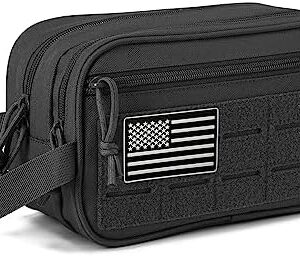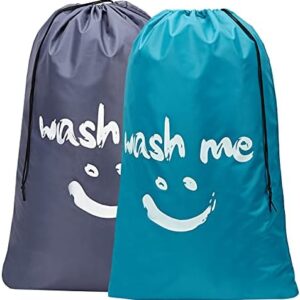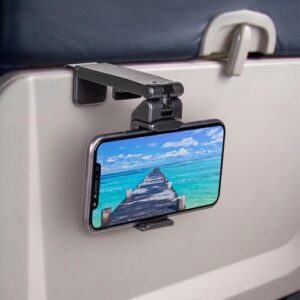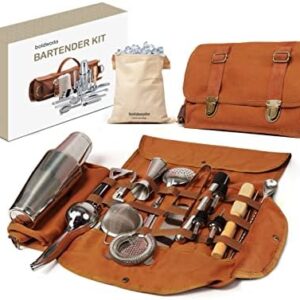
Imagine waking up in your hotel room, all excited for the day.
Suddenly, your head starts spinning, your nose starts leaking like a faucet, and your throat feels like something is clawing on it from the inside. Ugh!
That’s what happens when humidity levels are low.
Low humidity means there’s not enough moisture in the air, which dries out the mucous membrane in your respiratory tract.
That, in turn, makes you more vulnerable to airborne bacteria/viruses which make you sick.
There are only so many handkerchiefs you can use up, and so many pills you can pop, before traveling to cold places becomes more stressful than enjoyable.
Also, you can’t really avoid places with low humidity: Most countries experience extreme weather every now and then.
So what can you do, short of changing the weather?
The next best thing: Shopping for the best travel humidifiers online.
What’s a Travel Humidifier?
Ideally, indoor humidity levels should be between 30 and 50 percent, with 60 percent being the maximum comfortable humidity level. Anything below 30 percent — which is usually what happens during the winter months — would necessitate the use of a humidifier.
Be careful not to confuse a humidifier with a dehumidifier, though. Humidifiers increase moisture in the air, while dehumidifiers do the opposite. Double-check the labels before you buy!
Some of the most common types of humidifiers are:
Central humidifiers
Central humidifiers are designed to cover a large area (e.g. your entire house). They’re often built into AC units and are the biggest type of humidifiers. For obvious reasons, they’re not the most suitable humidifiers for travel.
Evaporators
Also known as wick humidifiers, evaporators pull in the surrounding air, run it through a wick filter with water, and push it back out.
They’re smaller than central humidifiers, but they’re still too big to be portable, require regular maintenance, and can only cover one room at a time.
Impeller humidifiers
Sometimes, impellers are called “cool mist humidifiers.”
That’s because their mechanism goes like this: A rotating disc sends water through a diffuser, which turns the water into cool mist and sends it back into the air. Impellers are the most common type of humidifier, and many of them are small enough to be portable.
Steam vaporizers
If impellers are cool mist humidifiers, steam vaporizers are warm mist humidifiers. The main body of the vaporizer contains water, which is boiled to the point of vaporizing. The vapor is then sent around the room, and the room warms up.
Steam vaporizers are ideal for sick people since the water can be infused with medicine that can ease nasal congestion and other common side effects of living under cold conditions.
However, they’re not recommended for children, since the heat can potentially cause burns.
Ultrasonic humidifiers
Similar to impellers, ultrasonic humidifiers send out cool mist into the surrounding air.
Instead of diffusers, however, they use ultrasonic vibrations to convert the water into a form that increases humidity levels.
What to Look for in a Travel Humidifier
Other than the type, you should also consider the following when shopping for the best travel humidifiers.
Noise or No Noise?
Some humidifiers emit a low humming sound. That may not be an issue for you, but it might be for the more sensitive members of your household.
Give the humidifier a quick test, and listen closely for any sounds that may be unpleasant to you and/or your loved ones.
Manual or Automatic?
As their name implies, manual humidifiers need your intervention to turn on and off. Automatic humidifiers, on the other hand, will turn on as soon as they detect that surrounding conditions require them to.
While automatic humidifiers are more convenient, you may not want to disregard manual humidifiers completely.
If you prefer to have more control over when your humidifier turns on and to what degree, the latter may be the more optimal choice.
To Maintain or Not to Maintain?
All humidifiers require maintenance, but some require more than others. Before you buy a humidifier, make sure you ask the seller how often you need to clean out the filter.
Do you need to clean it every month, every 3 months, or longer than that? If you’re a globetrotter through-and-through, low-maintenance humidifiers might be more up your alley.
Best Travel Humidifiers for 2021
1. Ostad Portable Humidifier for Travel


Tired of allergies kicking in at the worst times? Ostad’s portable travel humidifier can help you clear up your sinuses on the go.
Its flat base makes it easy to set up on almost any surface, while its USB adapter plug allows you to power it up virtually anywhere you go.
In case you have any issues with the product, you can contact the manufacturers within 60 days of purchase and get your money back.
Alternatively, you can take advantage of their one-year replacement guarantee.
Pro:
Con:
2. BONECO Travel Cool Mist Ultrasonic Humidifier 7146


At 2.6 x 4.4 x 3 inches and 1.3 pounds, the BONECO ultrasonic humidifier can fit inside your luggage without much trouble.
You can fill it with up to 1 gallon of water, and it’ll run for practically the whole day.
To use it, carefully tilt a bottle of mineral water into the slot, and it’ll run for as long as the water lasts. It’s great for bedside tables and office desks, though dashboards may not be the most ideal surface for it.
Pro:
Con:
3. Portable Cool Mist Humidifier w/Plug-in Adapter


If you don’t need to run your humidifier 24/7, Canary’s cool mist humidifier might be ideal. It has two work modes: 7 minutes of work plus 14 seconds of intermittence, and 5 minutes of work plus 10 seconds of intermittence.
What’s cool about this humidifier is that it has a power and refill indicator, meaning the device will automatically turn off if the water is below optimal levels.
If you want it to run a little longer, just plug it into any outlet compatible with a USB adapter.
Pro:
Con:
4. Fancii Cool Mist Personal Humidifier


Think humidifiers are too noisy?
Fancii’s ultrasonic humidifier runs at below 15 decibels, ensuring that you’ll hardly hear any humming sound from the device. Plus, at 5 x 4 x 1.5 inches, you can put it in your handbag without sacrificing space for your other essentials.
Fancii’s cool mist humidifier is powered by 3 AA batteries, minimizing the need to plug the device into an outlet (although it can run via USB too).
You can also minimize the time spent setting up the device, since it can adjusted to run for 2, 4, 6 or 8 hours.
Pro:
Con:
5. Portable Cool Mist Air Humidifier with Night Light


Need a little more pizzazz in your humidifier? JZK International’s line of humidifiers don’t only come in various colors — blue, lavender, orange, red, white, yellow, green and pink.
You can also pick one that rotates colors, while providing some much-needed night light.
Because this is a cool mist humidifier, it’s safe to use around kids. All you need to set it up is a USB cable, adapter and outlet.
JZK International claims to offer a “lifetime guarantee” on the product, though the manufacturer doesn’t really elaborate on what kind of lifetime guarantee.
Pro:
Con:
6. FIGROL USB Portable Mini Humidifier


You’d be forgiven for thinking that this is a microphone or a high-tech flashlight.
In fact, it’s a cool mist humidifier designed to make it easier to spread the vapors around. Just wave it around like a fairy godmother, and your surrounding humidity levels will improve.
It helps that FIGROL’s humidifier is quiet, and can be easily tucked into your bag or a cup of water.
Don’t forget to closely follow the instructions on how to set it up though: Its staff-like structure can be delicate.
Pro:
Con:
7. Ultrasonic Cool Mist Humidifier for Kids Rooms


If you appreciate a simple yet sleek design, you’ll probably appreciate Pure Enrichment’s ultrasonic humidifier.
The aesthetics aren’t the only noteworthy feature, however: The device can be set to deliver up to 60ml/hr on its lowest setting, and 80ml/hr on its highest.
The humidifier has a night light, though you can turn it off if it disrupts your sleep. With its 0.7L capacity, it can run for up to 10 hours, which is more than enough time to get some shut-eye.
Pro:
Con:
8. Villsure USB Mini Humidifier


This is definitely not a humidifier you can fit into a handbag. Standing 5.7 inches tall, Villsure’s ultrasonic humidifier works best for people who don’t mind carrying something that looks and is the size of a hot water flask.
On the plus side, since it’s relatively large, you can pour as much as 230ml of water into this humidifier.
There’s also a narrow vertical “window” on the side, allowing you to see whether the water is within optimal levels. On average, it’ll last from 5 to 10 hours.
Pro:
Con:
9. Ultrasonic Cool Mist Humidifier for Small Rooms


If you’re looking for something that’s as stylish as it is useful, WeYingLe’s ultrasonic humidifier won’t disappoint.
It’s quite travel-friendly, being slightly smaller than an iPhone 8 Plus. Its colors come in beige, blue, pink, and royal blue, and it can carry up to 250ml of water.
The device is simple to operate too, with its one-touch switch and 2-speed options. The cup can be placed on your bedside, beside the driver’s seat, or at your office desk.
Pro:
Con:
Conclusion
As Benjamin Franklin once said, “An ounce of prevention is worth a pound of cure.”
Instead of spending hundreds of dollars on allergy and flu medication, why not get a humidifier to keep nasty diseases at bay?
Humidifiers might take up more space than a bottle of pills, but considering their overall benefits, we’d say the slight hassle is worth it.
It’s a matter of choosing the right travel humidifier for you. Are you the only one who’s going to use it, or do you have kids with you?
Would you like it to have a night light, or can you do without that particular feature? Start with our list above, and you might just find what you’re looking for.







